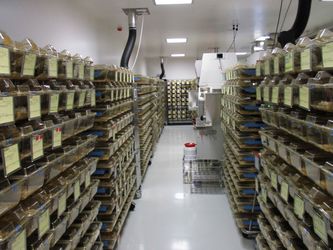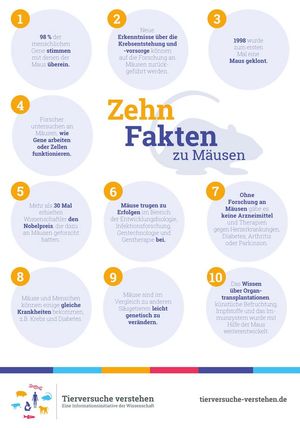Mouse as Model Organism
For over a hundred years, people have been using mice to do research. Initially, because it is rather simple and inexpensive to keep mice and they are quite short-lived with a life span of 2-3 years. However, today we now know that mice possess up to 95% of the same genes as humans. This makes them the world's preferred animal model for research on diseases.
Since mice are naturally predisposed to the development of cancer, they are used to uncover the causes of cancer development and to develop treatment therapies.
Wild mice vs laboratory mice
Also at FLI, mice are an important animal organism, e.g. in research on age-related processes such as muscle atrophy, colon cancer and stem cell aging. Mice in animal facilities differ significantly from mice in the wild. While wild mice are usually smaller and brown-gray colored, laboratory mouse strains have a variety of fur-colors and sizes. Due to decades of breeding under laboratory conditions, they are calmer and less aggressive.
Often so-called inbred strains are used in research. An inbred strain is the result of breeding only brother-sister pairings over many generations (at least 20). Animals from such strains are genetically nearly identical and therefore particularly useful for research. Since the development of genetic engineering methods, it has been possible to modify individual genes and investigate their specific functions. This allows a comparability of scientific results that are not influenced by genetic variability.
At FLI, we keep animals from different mouse strains that carry one or more genetic changes. The genes investigated here play an important role e.g. in nerve regeneration or DNA damage.
Contact
Cathrin Müller
Head Animal Facility Mouse
+49 3641 65-6608
cathrin.mueller@~@leibniz-fli.de











